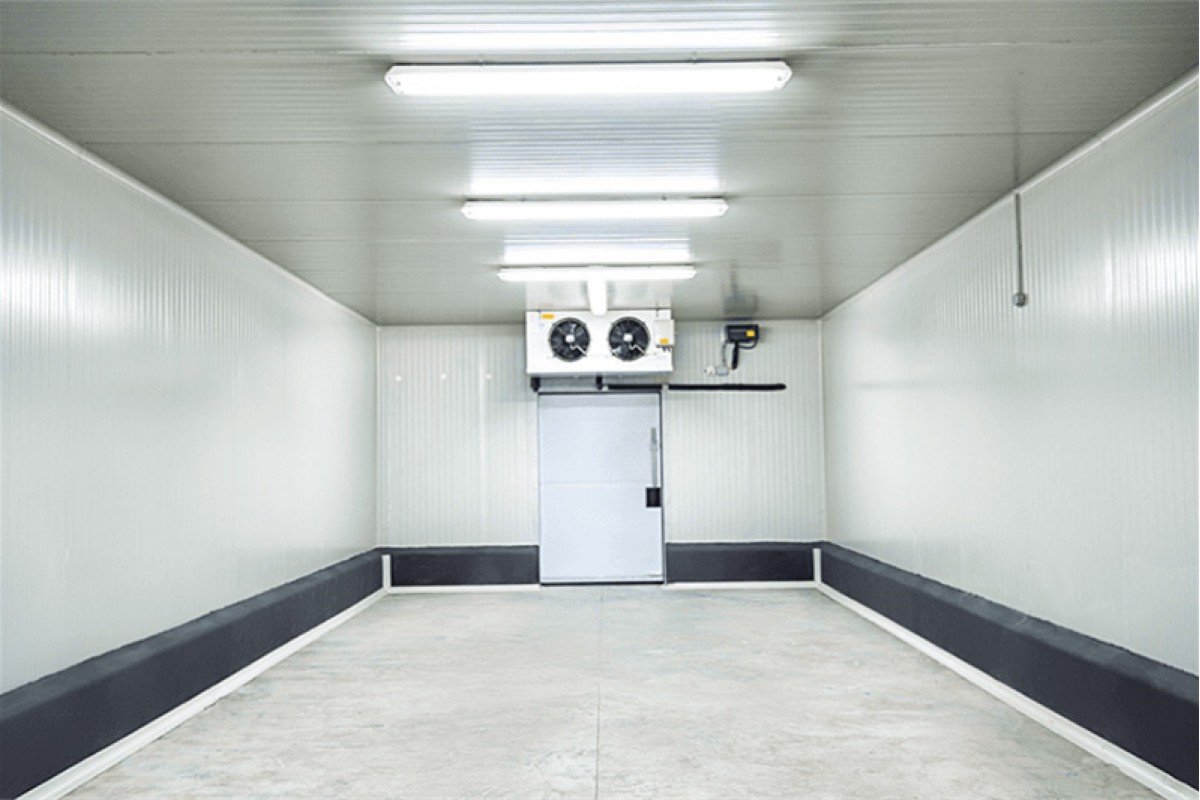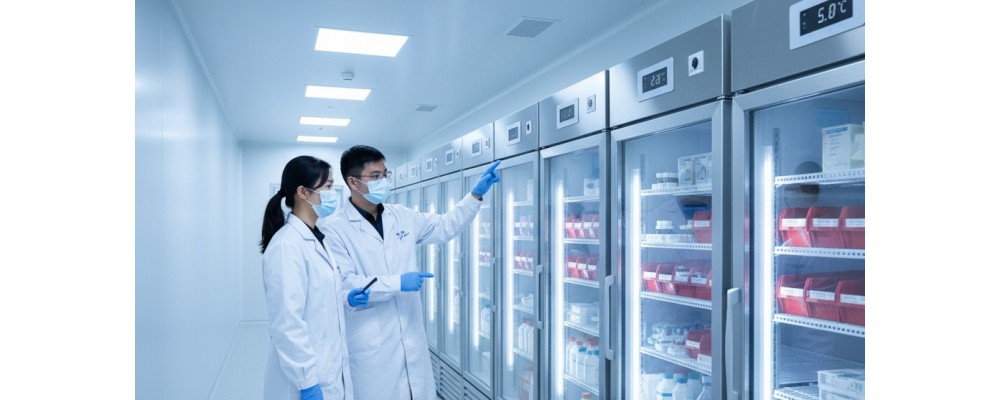A Comprehensive Guide to Medical Cold Storage: Design, Compliance, and Cost
Medical cold storage facilities are highly specialized, temperature-controlled environments designed for the precise storage of a wide range of medical products. These include vaccines, biologics, pharmaceutical drugs, reagents, and blood products. To ensure product integrity and patient safety, these facilities must be built to exacting standards, with a key requirement in many regions being GSP (Good Supply Practice) certification. A standard small-scale medical cold room (around 20 cubic meters) typically costs between $4,000 to $7,000 USD, though this can vary.
This guide provides a clear overview of the essential aspects of modern medical cold storage.

I. Critical Temperature Ranges for Medical Cold Storage
The specific temperature required depends entirely on the product being stored. Medical cold storage is therefore divided into several distinct temperature zones:
(1) Vaccine Storage (0°C to 8°C): Primarily used for the safe storage of vaccines and certain pharmaceuticals.
(2) Pharmaceutical Storage (2°C to 8°C): The most common range for storing a wide array of drugs and biological products.
(3) Blood Bank Storage (1°C to 5°C): Specifically regulated for storing whole blood, red blood cells, and other blood components.
(4) Low-Temperature Storage (-20°C to -30°C): Used for preserving blood plasma, biological materials, vaccines, and reagents that require freezing.
(5) Ultra-Low Temperature (ULT) Storage (-30°C to -80°C): Essential for the long-term preservation of sensitive biological samples such as stem cells, plasma, bone marrow, and genetic material.
II. Key Features of Medical Cold Storage Construction
Building a GSP-compliant medical cold storage facility involves more than just refrigeration. It requires a holistic approach focusing on precision, reliability, and safety.
1. Precision Climate Control
The design must fully account for the specific requirements of the stored products, including temperature, humidity, light exposure, and ventilation. High-precision temperature sensors and automated controllers are installed to constantly monitor and regulate the internal environment, ensuring stable conditions around the clock.
2. System Redundancy and Reliability
This is a non-negotiable feature for any GSP-compliant facility.
Dual Refrigeration Systems (N+1 Redundancy): Medical cold rooms are equipped with two independent refrigeration systems. One acts as the primary unit, while the other is on standby. If the primary unit fails, the backup system automatically activates, ensuring uninterrupted cooling and protecting the valuable inventory.
Backup Power Generator: To mitigate the risk of power outages, a dedicated power generator is installed. It is configured to start automatically the moment a loss of mains power is detected.
3. High-Quality Refrigeration Equipment
The choice of equipment is critical for performance and longevity.
Compressor Brands: Leading international brands are often preferred for their reliability, including Bitzer (Germany), Emerson Copeland (USA), and Hitachi (Japan), alongside other quality manufacturers.
Evaporator Types: The internal cooling unit (evaporator) is chosen based on the specific application. Pipe cooling (direct refrigeration) is suitable for some low-temperature applications, but air coolers (fan-forced evaporators) are more versatile. Different models are used for specific temperature ranges:
DL Models: Ideal for fresh storage rooms (0°C to 8°C).
DD Models: Designed for standard freezer rooms (-18°C).
DJ/CDJ Models: Engineered for blast freezing and ultra-low temperature applications.
Condensing Units: A wide variety of external condensing units are available, including fully hermetic, semi-hermetic, parallel piston units, and screw compressors, selected based on the facility's scale and cooling load.
4. Superior Insulation Panels
The structure of the cold room is built using polyurethane (PU) insulation panels.
Thickness & Performance: The panel thickness is determined by the required temperature, typically ranging from 100mm to 200mm (4 to 8 inches). These panels offer excellent thermal insulation.
Fire Retardant Ratings: Panels come with different fire-retardant ratings (e.g., B1/B2 class) to meet safety regulations.
Airtight Construction: The panels are joined using a cam-lock system, creating tight, secure seals between them. This method prevents thermal bridging (heat leakage) and ensures a highly efficient and stable insulated environment with a lifespan of 10-20 years.
5. Advanced Monitoring and Alarm Systems
A sophisticated control system is the brain of the facility.
Real-Time Monitoring: The room is equipped with a system that continuously tracks both temperature and humidity.
Automated Alerts: The control panel (e.g., a "Lydian" electronic control box) is connected to the internet. If the temperature or humidity deviates from the set range, or if an equipment fault is detected, the system will automatically:
Trigger an on-site audible and visual alarm.
Send instant alert notifications to the user's smartphone app.
Automatically attempt to start the backup refrigeration unit.
This ensures that managers are immediately aware of any issues and can take corrective action, safeguarding the products inside.
III. Medical Cold Storage Cost Overview
It is impossible to provide a single fixed price for a medical cold storage facility, as the cost is influenced by numerous factors:
Scale & Dimensions: The overall size (volume or floor area) of the cold room.
Temperature Requirements: Colder temperatures (especially ultra-low) require more powerful equipment and thicker insulation, increasing the cost.
Equipment Selection: The brand and model of compressors and evaporators.
Insulation Materials: The thickness and fire-retardant rating of the PU panels.
Number of Rooms: Facilities divided into multiple independent temperature zones are more complex and costly.
Geographic Location: Labor and transportation costs vary by region.
General Cost Components:
Core Structure: Insulation panels, cold storage doors, and structural accessories.
Refrigeration System: Compressor unit, evaporator, valves, refrigerant, etc.
Piping & Electrical: Copper piping, insulation, wiring, and the main control panel.
Soft Costs & Labor: Transportation, installation fees, maintenance contracts, and taxes.
Example Cost Estimates:
To provide a general idea, costs can be estimated as follows (subject to change based on the factors above):
A small 20 cubic meter cold room: Approximately $4,000 - $7,000 USD.
A medium 100 square meter facility: Approximately $20,000 - $25,000 USD.
A large 500 square meter facility: Approximately $80,000 - $90,000 USD.
For an accurate price, a detailed quote based on your specific temperature, layout, equipment, and site requirements is essential.








Comments: 0
No comments